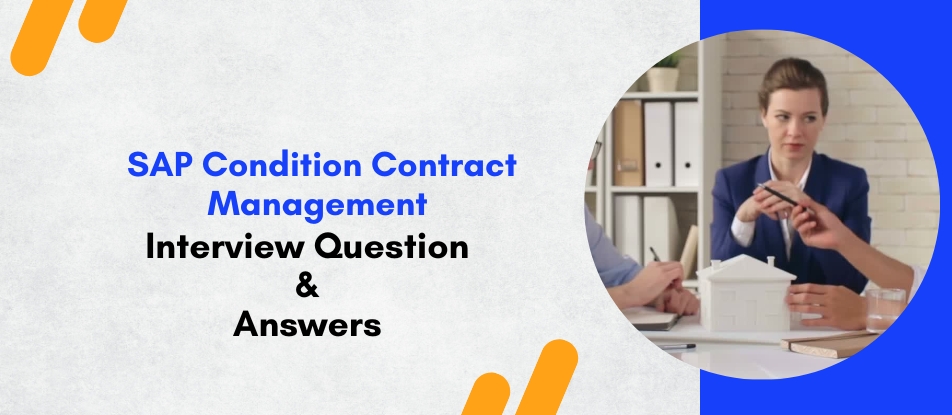
SAP Condition Contract Management (CCM) training equips learners with comprehensive skills to manage customer and vendor rebate agreements in SAP S/4HANA. The course covers key topics such as condition contract setup, transactional data extraction, accruals, settlements, reporting, and integration with financial accounting. Participants will explore advanced concepts like tiered rebates, retroactive processing, and compliance management. This training is ideal for SAP consultants, finance teams, and business users aiming to optimize rebate and incentive processes.
SAP Condition Contract Management Training Interview Questions Answers - For Intermediate
1. What is the difference between interim settlement and final settlement in CCM?
An interim settlement allows for periodic rebate payouts during the validity period of the condition contract, without closing the contract. A final settlement is done once the contract ends or based on specific business decisions, ensuring all transactions are settled and the contract is closed financially.
2. What is the role of eligibility criteria in condition contracts?
Eligibility criteria define which transactions (sales, purchases, returns) qualify for rebates under a condition contract. These criteria are based on partner, material, sales org, customer group, and other dimensions. Correct eligibility settings ensure accurate rebate calculations and prevent disputes.
3. How do you handle changes to a condition contract after it’s active?
Changes to active condition contracts are controlled through change documents and versioning. Certain fields can be modified within the validity period, while critical changes (like partner changes) may require creating a new contract version. This ensures auditability and prevents inconsistencies.
4. How is data consistency ensured between transactional data and CCM?
Data consistency is achieved through data extraction rules, eligibility checks, and data refresh cycles. CCM is designed to automatically extract relevant data from source documents (billing, PO, GR), while providing error logs and reconciliation tools to resolve any data mismatches.
5. What is the use of a reference condition contract?
A reference condition contract allows users to copy settings (eligibility, condition records, settlement calendar) from an existing contract to a new one. This feature speeds up contract creation for similar partners or scenarios and ensures consistency in contract structures.
6. How is the accrual condition type used in CCM?
An accrual condition type determines how accrual postings are generated for rebates. It helps create financial postings in real time as transactions occur. Proper configuration of accrual condition types ensures that the financial impact of rebates is correctly reflected in the books.
7. What tools are available for mass processing of settlement documents?
CCM offers mass processing capabilities through the Settlement Management Cockpit and Fiori apps. Users can schedule batch jobs to automate the creation of multiple settlement documents based on predefined selection criteria, improving operational efficiency.
8. What is the difference between a header condition and an item condition in CCM?
A header condition applies to the entire contract or document, providing rebates based on overall transaction value. An item condition applies to specific materials, material groups, or line items. This distinction allows flexibility in designing rebate programs for different business scenarios.
9. How do you handle cancellations or credit memos in CCM?
Cancellations and credit memos are automatically considered in the rebate calculation when the system extracts transactional data. The impact of such documents reduces the eligible base value for rebate calculation and ensures that accruals and settlements reflect the latest transactional state.
10. What is the role of condition contract type in CCM?
The condition contract type determines the behavior and structure of the contract, such as whether it is sales-based or purchase-based, which document types are used for settlement, and the default settlement calendar. It acts as a template for creating consistent and controlled contracts.
11. How is retroactive rebate processing controlled in CCM?
Retroactive rebate processing is controlled via the validity period of the condition contract. If the validity includes a past date, the system extracts and recalculates historical transactional data to ensure rebates are properly accrued and settled for the entire period.
12. What is the use of a pricing date in rebate calculation?
The pricing date determines which condition record is used for rebate calculation. It can be based on transaction date, billing date, goods issue date, or other date fields. Proper configuration of the pricing date ensures accurate rebate amounts aligned with business rules.
13. How can SAP Fiori apps enhance the usability of CCM?
SAP Fiori apps provide modern, intuitive user interfaces for CCM processes such as contract creation, settlement processing, accrual monitoring, and reporting. They enhance user experience with real-time data visualization, easier navigation, and role-based access, helping business users manage rebates more effectively.
14. How does CCM integrate with the SAP Universal Journal (ACDOCA)?
CCM posts accruals and settlements directly into the SAP Universal Journal (ACDOCA), ensuring a single source of truth for financial reporting. This integration allows businesses to achieve real-time financial transparency, improved reconciliation, and compliance with accounting standards.
15. How can SAP CCM be used to manage loyalty programs?
SAP CCM’s flexible architecture allows it to manage loyalty and incentive programs by configuring condition types and eligibility criteria to suit loyalty scenarios. Businesses can create condition contracts that reward customers based on purchase volume, product categories, or special campaigns.
SAP Condition Contract Management Training Interview Questions Answers - For Advanced
1. How does SAP CCM support rebate management in a global, multi-currency environment?
SAP CCM is fully capable of managing rebates in a global, multi-currency environment by leveraging SAP’s robust currency management framework. Condition contracts can be defined with a specific contract currency, and transactional data can come in multiple currencies. The system uses standard exchange rate types and valid currency conversion rates to ensure that transactional amounts are accurately converted to the contract currency for accrual and settlement purposes. During settlement processing, the system can handle currency rounding, posting differences, and compliance with local currency regulations. Additionally, financial postings reflect both the local currency and the group currency in Universal Journal, supporting multinational financial consolidation and reporting.
2. Describe how real-time rebate accrual postings are achieved in SAP CCM.
Real-time rebate accrual postings in SAP CCM are made possible by the close integration between CCM, Settlement Management, and the Universal Journal (ACDOCA). When eligible transactions (such as sales invoices) are processed, CCM can trigger accrual postings based on delta accrual logic. The system calculates the rebate liability using the active condition contract and posts the corresponding journal entries in real time. This ensures that the financial books always reflect up-to-date liabilities without the need for periodic manual accrual adjustments. Additionally, real-time accruals improve transparency for stakeholders and provide immediate insights into the financial impact of rebate programs.
3. How do settlement documents in CCM handle tax calculation and compliance?
Settlement documents in SAP CCM integrate seamlessly with SAP’s tax calculation engine, such as the Tax Procedure in SD/MM or SAP Localization Hub (Advanced Tax Compliance). When a settlement document (credit memo or invoice) is generated, the system automatically calculates applicable taxes based on the partner’s tax classification, material tax codes, jurisdiction, and other master data. CCM also supports country-specific tax compliance features such as VAT reporting, GST requirements, and digital tax reporting where needed. This ensures that rebate settlements meet global tax regulations and can be fully reported to tax authorities.
4. How can rebate liability reporting be customized for specific management needs?
Rebate liability reporting in SAP CCM can be highly customized through several tools. CDS views can be used to expose CCM data structures such as accruals, condition contract balances, and settlement results. These CDS views can then be consumed by Fiori apps, embedded analytics, or external BI tools like SAC. Businesses can build custom dashboards with dimensions such as partner group, product line, region, or time period. Moreover, user-defined fields and BADIs allow companies to introduce additional reporting dimensions specific to their industry needs. This enables finance, sales, and management teams to gain actionable insights into rebate exposure and performance.
5. How does SAP CCM manage rebate recalculation when transactional data is corrected after initial accrual?
In SAP CCM, the system supports dynamic rebate recalculation through its delta accrual processing and extraction logic. If underlying transactional data (such as billing documents) is changed after initial accrual postings—due to corrections, returns, or credit notes—the extraction logic identifies these changes during the next extraction cycle. The system recalculates the rebate amounts accordingly, posts delta adjustments to the accrual accounts, and updates the liability in the Universal Journal. This automated process ensures that the financial representation of rebates always reflects the latest transactional state, maintaining accuracy and auditability.
6. What are the differences between sales-side and purchase-side rebate processing in CCM?
In sales-side rebate processing, condition contracts are created between the company and customers, where the company provides incentives to customers based on sales transactions. In purchase-side processing, the company receives incentives from vendors based on procurement activities. While the underlying architecture of CCM is the same for both scenarios, key differences include the source of transactional data (sales billing vs. purchase orders/goods receipts), the flow of accruals (sales-side impacts revenue; purchase-side impacts costs or COGS), and the type of settlement documents generated (credit memos vs. vendor invoices). CCM’s flexible design supports both processes within the same system.
7. How does SAP CCM ensure separation of duties (SoD) and internal controls?
SAP CCM leverages SAP’s standard authorization framework to enforce separation of duties (SoD) and internal controls. Roles can be configured to segregate contract creation, approval, accrual posting, settlement processing, and financial review. For example, the same user cannot both approve a contract and process its settlement. Additionally, workflow mechanisms can be implemented for contract approval, ensuring that sensitive rebate agreements are reviewed by authorized personnel. Change documents and versioning further enhance internal control by providing full audit trails of contract changes, settlement runs, and financial postings. These features help organizations comply with internal governance policies and external audit requirements.
8. How can SAP CCM be extended to integrate with external CRM or loyalty platforms?
SAP CCM can be extended to integrate with external CRM or loyalty platforms via SAP’s standard integration technologies such as OData services, BAPIs, or middleware solutions like SAP CPI (Cloud Platform Integration). Custom fields and user exits can be added to condition contracts to capture loyalty program attributes. External transactional data such as loyalty points or campaign results can be mapped to CCM data structures for rebate calculation. Real-time APIs can also enable dynamic feedback to CRM systems regarding eligible rebate balances or customer incentives. This creates a seamless experience for managing multi-channel rebate and loyalty programs.
9. Explain the importance of version management in rebate contract lifecycle management.
Version management in SAP CCM is critical for maintaining the integrity of rebate contract lifecycle management. In industries where rebate agreements evolve frequently due to negotiations, promotions, or market changes, maintaining historical versions ensures traceability of terms and calculations. When a new version is created, the system retains the old version’s terms for audit purposes and recalculates accruals and settlement eligibility based on the new version from its effective date forward. This ensures that rebate liabilities are correctly split between contract versions, prevents disputes with partners, and supports accurate financial reporting in dynamic business environments.
10. How can SAP CCM be leveraged for managing marketing development funds (MDF)?
Marketing development funds (MDF) are a common business scenario in industries like Consumer Goods and Hi-Tech. SAP CCM can manage MDF by configuring condition contracts to represent MDF agreements. The contracts can include eligibility criteria for co-marketing expenses, promotional activities, or partner spend reimbursements. Transactional data related to MDF claims can be integrated via custom data sources or external systems. Settlement processing can generate reimbursement payments or credit memos to partners. The same compliance, auditability, and financial integration features of CCM apply to MDF scenarios, making CCM a versatile tool for managing partner incentive programs beyond just sales rebates.
11. How can rebate exposure be forecasted in SAP CCM?
Forecasting rebate exposure in SAP CCM involves simulating future rebate liabilities based on open condition contracts and projected transactional volumes. The Settlement Cockpit and Simulation features can be used to model “what-if” scenarios. Additionally, advanced users can leverage predictive analytics tools such as SAP Analytics Cloud (SAC) to forecast future rebate accruals using historical trends, seasonality, and sales pipeline data. Accurate rebate exposure forecasting supports financial planning, helps manage working capital, and enables more strategic pricing and rebate program design.
12. How do you manage overlapping rebate agreements in SAP CCM?
Overlapping rebate agreements can occur when multiple condition contracts are valid for the same partner, product, or transaction period. SAP CCM manages these scenarios through eligibility criteria, exclusion logic, and prioritization. Contracts can be configured with mutually exclusive condition types or priority settings to ensure that only one rebate is applied per transaction. Alternatively, business logic can be implemented via BADIs to allow for cumulative or partial stacking of rebates where business policy allows. Proper governance of overlapping agreements is essential to avoid rebate leakage and ensure compliance with contractual obligations.
13. What is the role of data aging and archiving in SAP CCM?
As rebate programs generate large volumes of data over time—such as transactional extracts, accruals, and settlement documents—efficient data management becomes crucial. SAP CCM supports data aging and archiving based on SAP ILM (Information Lifecycle Management) capabilities. Historical condition contracts, settled documents, and related financial postings can be archived to reduce database footprint while maintaining legal retention compliance. Data aging strategies can be applied to less frequently accessed data, improving system performance without compromising reporting and auditability. Effective data lifecycle management helps maintain system agility and operational efficiency.
14. How does SAP CCM support audit preparation and external audit requirements?
SAP CCM is built with audit readiness in mind. All condition contracts, transactional extracts, settlement runs, and financial postings are fully documented. Change documents provide an audit trail for all contract modifications. Settlement documents link back to the exact transactions that contributed to rebate calculations. Financial postings are traceable in the Universal Journal. Standard reports and audit-friendly views can be used to support both internal and external audits. Additionally, SAP CCM’s compliance with IFRS 15 requirements for variable consideration ensures that rebate-related revenue recognition aligns with regulatory standards.
15. What are the critical success factors for a smooth SAP CCM implementation?
Successful SAP CCM implementation depends on several key factors. First, clearly defining business requirements and rebate program scenarios ensures accurate system design. Second, robust master data management—especially for partners, materials, and organizational structures—is essential for accurate eligibility determination. Third, proper integration with transactional systems (SD, MM, FI) must be validated. Fourth, strong governance and version control processes are needed to manage the rebate lifecycle. Finally, user training and change management are critical to ensure adoption of the new process. Continuous monitoring of rebate exposure and regular reconciliation rounds out the strategy for sustaining a high-performance CCM environment.
Course Schedule
| Dec, 2025 | Weekdays | Mon-Fri | Enquire Now |
| Weekend | Sat-Sun | Enquire Now | |
| Jan, 2026 | Weekdays | Mon-Fri | Enquire Now |
| Weekend | Sat-Sun | Enquire Now |
Related Courses
Related Articles
- SAP HR306 Training: Deep Dive into Time Management Configuration
- A Comprehensive Guide to ANSYS Fluent Training
- How Murex Reduces Operational Risks in Global Financial Systems
- Master ITIL 4 Foundation Certification Training for Career Growth
- How Kronos Workforce Dimensions Training Builds Real Skills
Related Interview
Related FAQ's
- Instructor-led Live Online Interactive Training
- Project Based Customized Learning
- Fast Track Training Program
- Self-paced learning
- In one-on-one training, you have the flexibility to choose the days, timings, and duration according to your preferences.
- We create a personalized training calendar based on your chosen schedule.
- Complete Live Online Interactive Training of the Course
- After Training Recorded Videos
- Session-wise Learning Material and notes for lifetime
- Practical & Assignments exercises
- Global Course Completion Certificate
- 24x7 after Training Support



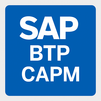
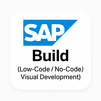
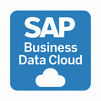

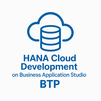
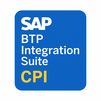
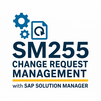

 Join our Live Instructor-Led online classes delivered by industry experts
Join our Live Instructor-Led online classes delivered by industry experts